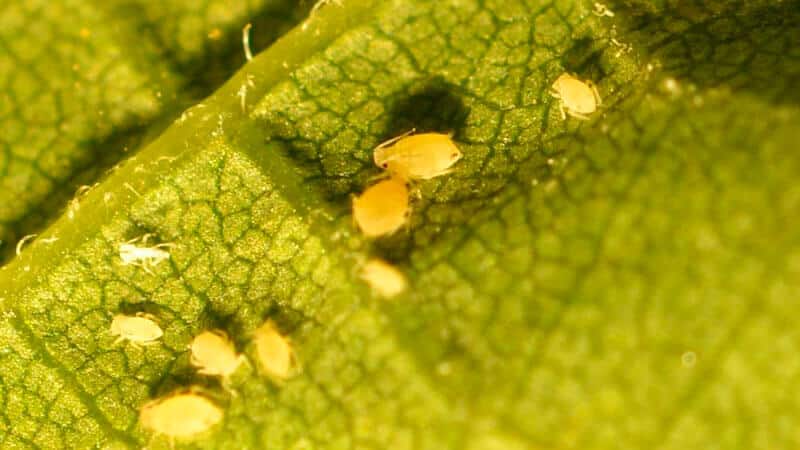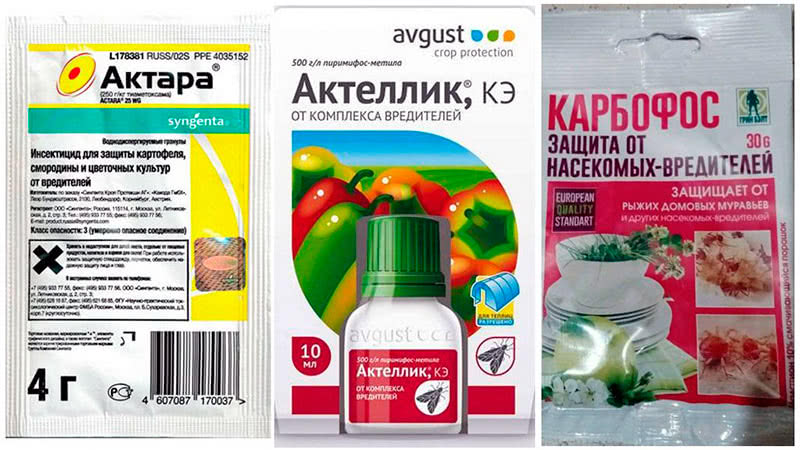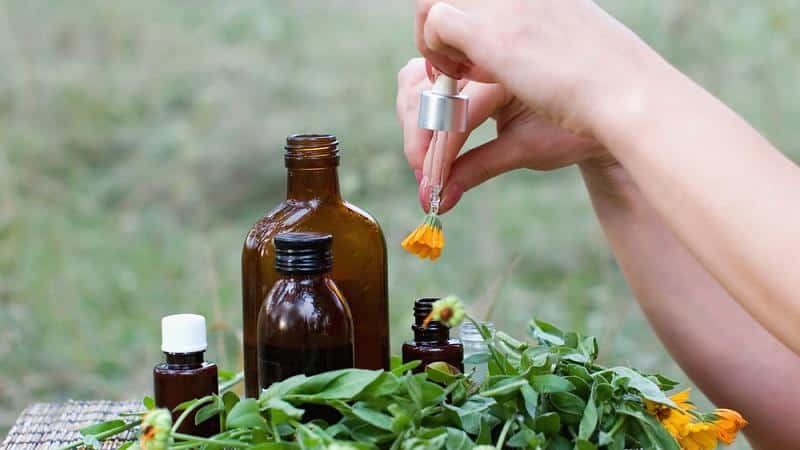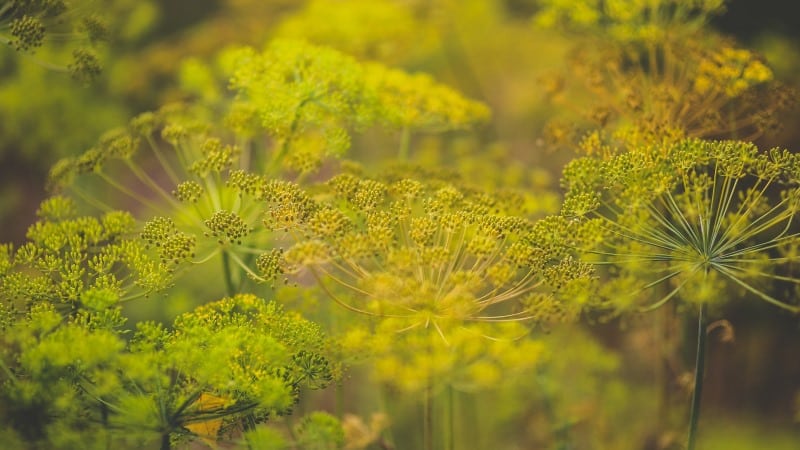What is the best way to treat dill against aphids?
Aphids attack dill more often than other pests. Insects are attracted to lush green twigs. If measures are not taken in time, you can completely lose your green harvest. The peak activity of aphids occurs in May-June; it is during this period that people in their summer cottages begin to actively fight them using all possible means. Gardeners are faced with questions about how to get rid of aphids on dill using folk and chemical means and how to prevent infection.
Reasons for appearance

Dill is most often attacked by willow-carrot aphids. During the summer period, the insect produces up to 18 generations, and this becomes a real disaster for plants.
The main carriers of aphids are ants, which are attracted to the sweet, sticky liquid (honeydew) secreted by pests during their life processes. Ants not only organize feasts, but also protect aphid larvae and hide them in anthills for the winter. It is not difficult to guess that with the onset of summer the situation repeats itself again.
Reference. Winged individuals are able to migrate in search of new food.
Signs of infection
Aphids suck liquid from plants, and with it nutritional components. As a result, the branches wither, become deformed and dry out. Green growth slows down. If you carefully examine the greens, you can see colonies of green or black aphids.
Sweet honeydew, or honeydew, is an excellent medium for viruses and bacteria to attach and spread. The accumulation of sticky fluid stops photosynthesis.
This is interesting:
How to get rid of aphids with the least damage to tomatoes?
Is it possible to eat dill with gastritis and how to use it.
Fighting methods
What to do if aphids eat dill? There are many options. To combat it, they use chemicals, biological products, folk recipes for decoctions and infusions, and agricultural techniques. You can also remove insects using water pressure, but this is only a temporary method. The aphids will return if you don't get rid of the root cause - the ants.
Each method has a detrimental effect on insects to a greater or lesser extent. To understand which one works more effectively, you will have to try it in action. The situation is complicated by the fact that aphids quickly get used to chemicals and do not always react properly to herbal preparations.
Chemicals
You won’t have to search long for something to treat dill to quickly get rid of aphids. Dozens of highly effective drugs are available in specialized stores.

Insecticides will come to the rescue:
- «S-30". For 10 l. take 300 ml of water. products and mix. Greens are irrigated in early spring.
- "Karbofos". For 10 l. water take 1 tbsp. l. facilities. Spray the lower part of the plants generously.
- "Inta-Vir" This is a universal remedy for most garden plants. At 10 l. dissolve 1 tablet in water.
- «Decis LukeWith". For 10 l. water take 2.5 ml of emulsion. Processing of greenery is carried out with the appearance of insects. Repeated spraying - no earlier than after 2 weeks.
- "Metaphos". At 10 l. water is diluted with 10 ml of emulsion. Greens are processed in the morning and evening.
Despite the high effectiveness of these drugs, many summer residents avoid using pesticides on their plots and use other methods of exterminating pests.
Reference. Aphids quickly get used to insecticides, so it is recommended to periodically change the preparations.
How to fight with folk remedies
The chemicals are powerful, but there is a risk of poisoning from toxic substances.

The safest folk remedies for human health are:
- Infusion of onion peel. Soak a few handfuls in 3 liters. warm water for 5-6 hours, then add 50 g of laundry soap shavings. Use to irrigate dill after evening watering.
- Tobacco. At 5 l. Soak 200 g of shag in water, leave for two days and strain through cheesecloth. Spray every three days.
- Camomile tea. 100 g of dry chamomile pour 1 liter. warm water, leave for 10-12 hours. Before processing, bring the infusion to a volume of 5 liters. and add 1 tbsp. l. soap shavings. Spray the greens until the aphids disappear completely.
- Soap solution. For 10 l. water, take 125 g of liquid tar soap or 200 g of solid soap (grate). Irrigate the greens in the evening until the pests completely disappear.
- Infusion of ash. For 5 l. take 1.5 kg of hot water. ash, leave for 48 hours. Strain through a thin cloth and mix in 50 g of soap. Apply after sunset.
- Table vinegar. For 10 l. water take 1 tbsp. l. vinegar and carefully process the dill every three days.
- Ammonia. In 1 l. water stir 1 tbsp. l. ammonia and treat the plants three times a week after evening watering.
- Soda. At 10 l. dissolve 10 tbsp of water. l. soda Spray the greens twice a week.
- Milk and iodine. Add 0.5 ml to 100 ml of milk. iodine and dilute 1 liter. water. Use to water greens twice a week.
Important! Homemade infusions and solutions should not be used in rainy weather. After treatment, do not water the greens for 2-3 days to maintain the detrimental effect on aphids.
Fumigation
The tobacco fumigation method is used when growing dill in greenhouses. It is much more difficult to fight aphids indoors, and tobacco smoke completely destroys the pest without harming the plants.
In the greenhouse you will have to close all the windows, place an iron can in the center of the room, make a mini-fire from wood chips and pour out the shag. Then go out and close the door tightly. After the smoke has cleared, ventilate the room for 2-3 hours. The aphids die 24 hours after the smoke attack.
Reference. One treatment takes up to 5 kg of tobacco.
Preventive measures

Following agrotechnical practices will help prevent dill from becoming infected with aphids:
- Plant dill in sunny, ventilated areas.
- Periodically weed the beds and remove weeds.
- Do not thicken plantings or thin out plants.
- Inspect the bushes often.
- Do not sow dill in areas where parsley, carrots, celery, cucumbers, and tomatoes were grown.
- Alternate dill with onions, garlic or plant crops nearby.
- Plant coriander, basil, fennel, mint, chamomile, and marigolds in the neighborhood to protect against pest attacks and attract beneficial insects (ladybugs, ground beetles, crickets, earwigs, cicadas).
- At the same time, fight ants.
- Apply potassium-phosphorus fertilizers.
- Cover the dill with agrofibre (thin synthetic material that allows air to pass through).
Read also:
Effective treatment with dill for urinary incontinence.
Why does dill turn yellow in the garden and what to do to prevent it.
What are the benefits of dried dill, how to prepare and use it.
Conclusion
An integrated approach to the destruction of aphids on dill is the key to success.Alternating chemical and folk remedies, using proper agricultural practices (changing crop rotation, planting plants to attract beneficial insects, weeding), and repelling ants will help preserve the harvest and get rid of insects.